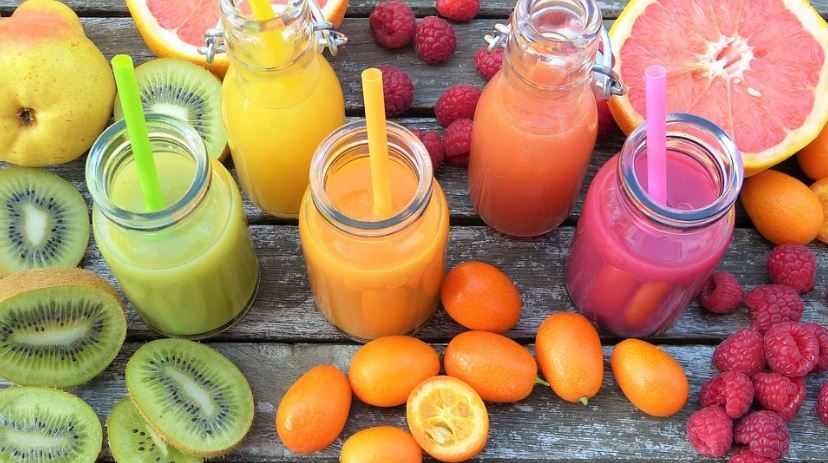Whether someone gave you a new juicer or you simply want to add more fresh vegetables and fruits to your diet, you might find yourself a little bit curious about juicing. Most people started juicing to lose weight, gain energy, or improve their overall health. That is why in this article, we are going to help you make your mind about juicing and choosing a healthy lifestyle by giving you a guide to all things juicing.
What is Juicing?
To put it simply, juicing is like drinking your food. Juicing is not like consuming commercially made juices because they are packed with artificial flavoring and sugar. Juicing is a process where you extract the natural liquids from raw foods and vegetables until you have a juice that is filled with minerals, vitamins, antioxidants, and phytonutrients.
Benefits of Juicing
If you’re going to extract the natural juices from fruits and vegetables, you’re really going to end up with a nutritious and delicious beverage. Fresh fruits and vegetables provide you with many nutrients that your body needs. These nutrients are readily and easily absorbed into your bloodstream, which helps every organ perform at its best. Here are some health benefits that most people experience when juicing:
- Better digestion
- fewer headaches
- Alkaline body (balanced the body’s pH)
- Improved immune system
- Less joint pain
- Mental clarity
- More energy
- Better sleep
- Less stress
- Clear, glowing skin
- Weight loss
- Thick, shiny hair and nails
Choosing a Juicer
Masticating Juicers – This type of juicer is also known as cold press or gear juicers, and they work by grinding vegetables and fruits to break them up after they press the bits through a strainer. Masticating juicers are perfect for juicing greens more effectively, and with this juicing, you would be able to preserve the nutrients and enzymes of the fruits and vegetables. They produce wholesome and concentrated juice. But, masticating juicers are typically more expensive than centrifugal juicers.
Centrifugal Juicers – This is the most common type of juicer, and they are often found in kitchen shops and department stores. Centrifugal juicers first chop your vegetables and fruits into fine pieces while spinning the bits at high speed, separating the juice from the pulp. However, centrifugal juicers are high-speed machines that generate heat that can affect the nutrients and enzymes of the juice. But, this type of juicer is less expensive compared to masticating juicers, and they are easier to clean, too.
When buying a juicer, it is essential to consider the types of products you want to juice. This is because some juicers can handle different kinds of textures well, while others may have a bit of trouble grinding and juicing specific types of fruits and vegetables. For example, centrifugal juicers have trouble extracting juice from leafy vegetables, but they are great for juicing different kinds of fruits and vegetables. That is why if you want to incorporate more greens into your diet, it is best if you get yourself a masticating juicer. Because even if it’s a little bit expensive compared to centrifugal juicers, it will do a better job grinding produce at low speed and removing the juice from the pulp.
[wptb id="1947" not found ]Maximize Your Fruits and Vegetables
You will be left with veggie pulp and leftover fruits when you’re juicing. That is why you need to be creative in recycling and reusing them. You can try some of these options:
- Compost it.
- Feed it to your neighbor’s chickens.
- Add it into a smoothie for a fiber boost.
- Try to look for recipes where you can add them, such as burgers, pasta sauce, and omelets.
- Add them to a soup or cook them with other ingredients to make a broth.
- Look for pulp pizza crust or chips recipes online.
Avoid Making These Common Mistakes
You’re free to mix whatever kind of fruits and vegetables you want when you’re juicing. It is about finding experimentation, flavor combinations, and methods that will suit your needs. With that being said, there are still these common mistakes that you should avoid when you’re juicing:
- Adding too much fruit – Remember that fruits are also packed with sugar, and you should still control putting too much of them in your juice even if they taste great.
- Making the same recipe over and over again – Juicing is all about experimenting. That is why you should never stick to one recipe only. Try to mix different kinds of fruits and vegetables as much as you can because your body needs various nutrients and enzymes.
- Not drinking it right after juicing– Remember that freshly made juice is best enjoyed exactly after it’s made. If you leave it hanging after making it, chances are the nutrients will begin to break down.
- Replacing a complete meal with juice – Remember that freshly-made juice is not a substitute for a full meal. Even if they are packed with vitamins and minerals, your body still needs a lot more than that.
- Not listening to what your body needs – Always take a look at the quantity of your juice, the combination of the fruit and vegetables that are right for you, and the time of day that you consume your juice.
